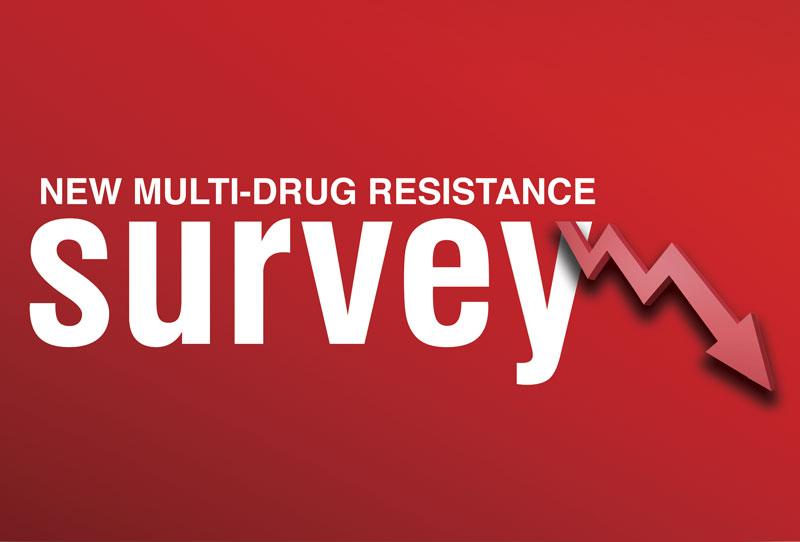
The results from the Second Nationwide Drug Resistance Survey of Tuberculosis (TB) are out, said Dr. Noel G. Macalalad, head of the National Tuberculosis Reference Laboratory and Tuberculosis Study Group of the Department of Health (DOH), during a talk at the recent PhilCAT convention. [DOH (2013). Second nationwide drug resistance survey of TB in the Philippines. Unpublished raw data]
Conducted from 2009 to 2013, the survey showed a significant decrease in the prevalence of multidrug resistant TB (MDRTB), compared with the first survey done in 2004: an MDRTB prevalence of 2.0 percent versus 3.8 percent in the previous study. [Int J Tuberc Lung Dis 2009;3:500-507]
Similar to the first survey, this survey aimed to determine the national prevalence of resistance to the four major drugs (isoniazid, rifampicin, ethambutol and streptomycin) among new and retreatment cases, and to determine the prevalence of MDRTB (defined as resistance to at least both isoniazid and rifampicin) among the same. The focus of the study were smear-positive cases, either new or retreatment (cases of relapse, return after default, treatment failure and others). Smear-negative and extrapulmonary cases were excluded.
The survey included 16 regions nationwide, spanning 54 provinces/cities and at least 60 clusters, with each cluster having 2-17 Directly Observed Treatment Short-Course (DOTS) facilities. Eligible patients were subjected to data collection, as well as sputum sampling for TB cultures and drug susceptibility testing (DST).
A total of 3,571 newly detected TB cases, currently not undergoing treatment, at least 15 years of age, were enrolled, surpassing the total of 1,091 total patient population in the 2004 study. Among the subjects of the recent study, 91.7 percent were new or treatment-naïve cases, and 7.2 percent were retreatment cases; the rest had unknown history. Eligible DST results were found in 75.4 percent of all subjects in the current study.
The results showed that a good majority of cases were still susceptible to first-line treatment, at 82.53 percent of new cases and 56.3 percent of retreatment cases. However, MDRTB prevalence was 2.0 percent among new cases, and 21.7 percent in retreatment cases (compared to 3.8 percent and 20.9 percent, respectively, in the 2004 study). As with the first survey, the prevalence of drug resistance among new cases was higher than the global average of 1.2 percent for new cases, and 7.7 percent for retreatment cases. The results further showed that MDRT is widespread in the country. Fortunately, only 6 cases or 0.1 percent were noted to have resistance to a second line injectable drug, and no cases had accompanying resistance to fluoroquinolones (extensive drug resistant TB cases).
Logistics regression performed on the results revealed that MDRTB was significantly associated with age less than 40 years old (odds ratio [OR], 1.8), previous treatment (OR, 14.2), and presence of diabetes mellitus (OR, 3.0). Previous exposure to TB treatment is clearly the most significant risk factor for drug resistance. Other associations will be investigated further, regarding the clinical and public health relevance, since studies done in other countries have not deemed these variables as critical inputs to the prevention and control of MDRTB in their respective populations. Variables such as sex, rural or urban setting, weight, hemoptysis, bacillary load, alcohol use, smoking, and TB among household contacts showed statistically insignificant associations.
The information obtained from this study is crucial in the improvement of the national TB control program. The wide discrepancy of MDRTB in new and retreatment cases (2 percent versus 21 percent, respectively) reveals that the compliance and control of the default rate of patients undergoing DOTS must be further intensified. The significant reduction in MDRTB prevalence, however, shows that the thrusts of the national TB control program are considerably successful.